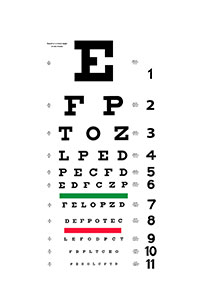
Did you know that cataracts will affect over half of all adults over age 60? A cataract is a gradual clouding of the natural lens of the eye. Cataracts progress slowly, so initially there may be no noticeable changes in your vision. Symptoms include:
- Blurry or dim vision
- Annoying glare in sunlight
- Diminished color perception
- Poor night vision
- Repeated changes to your contact lenses or eyeglass prescription
Who is at risk for cataracts?
Risk factors for cataract development include:
- Advanced age
- High blood pressure
- Obesity
- Smoking
- Diabetes
- Previous eye injury or surgery
- A history of cataracts in your family
Advanced Treatment
Our practice has extensive training in cataract removal and we continuously strive to provide cataract patients with the safest, most pain-free recovery of vision possible. New advances and techniques have made cataract surgery one of the most successful and life-improving surgical procedures performed. We offer the latest procedures available to help remove cataracts and restore your vision, including the placement of intraocular lenses (IOLs). Most cataract surgeries are performed on an outpatient basis and more than 95 percent of surgeries improve vision.
Intraocular Lens
During cataract surgery, the eye's natural lens is removed and replaced with an intraocular lens or IOL. Since being approved by the FDA in 1981, IOLs have offered an efficient alternative for cataract patients. Before the use of IOLs, cataract patients had to wear very thick eyeglasses or special contact lenses in order to see once the natural lenses were removed.
